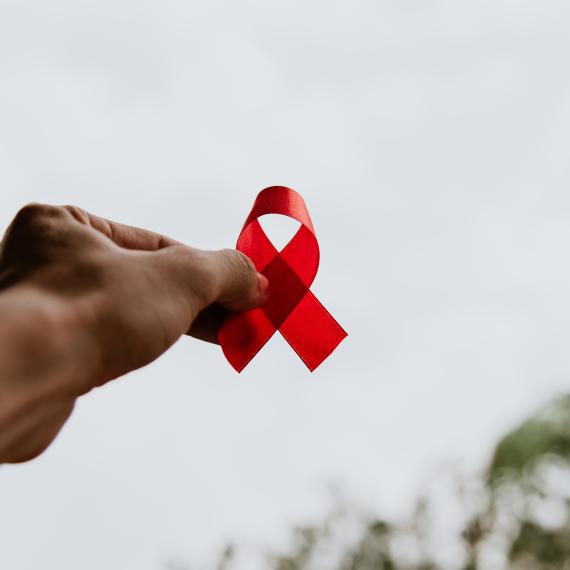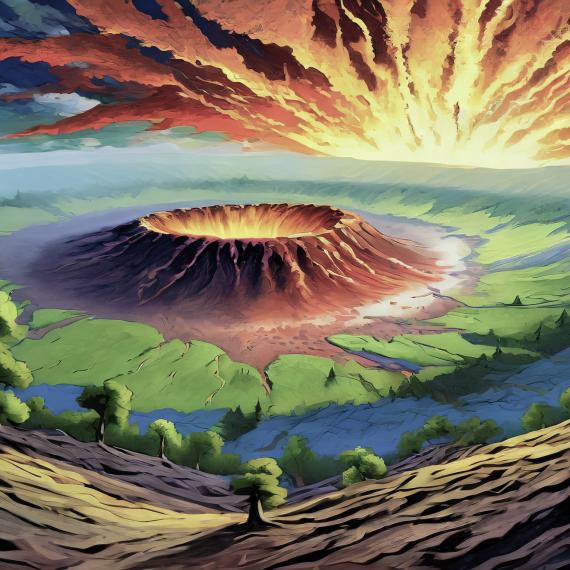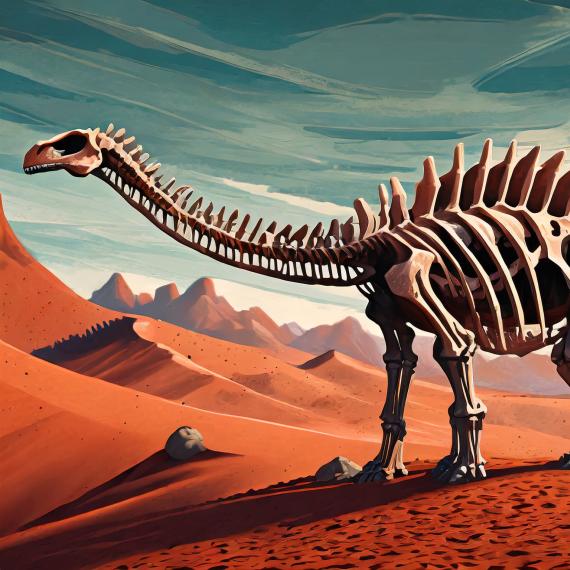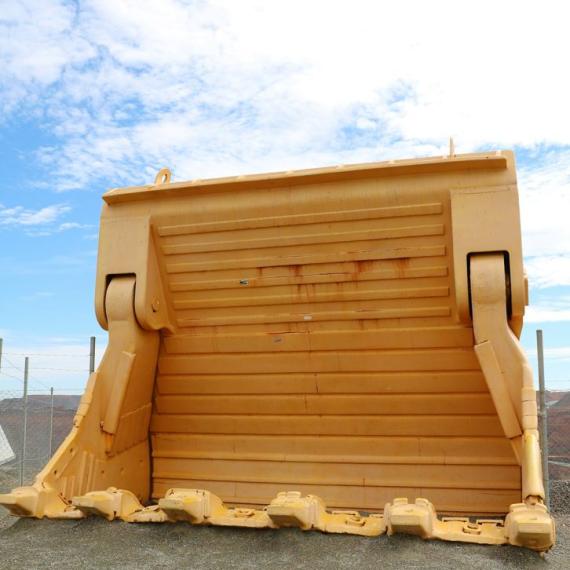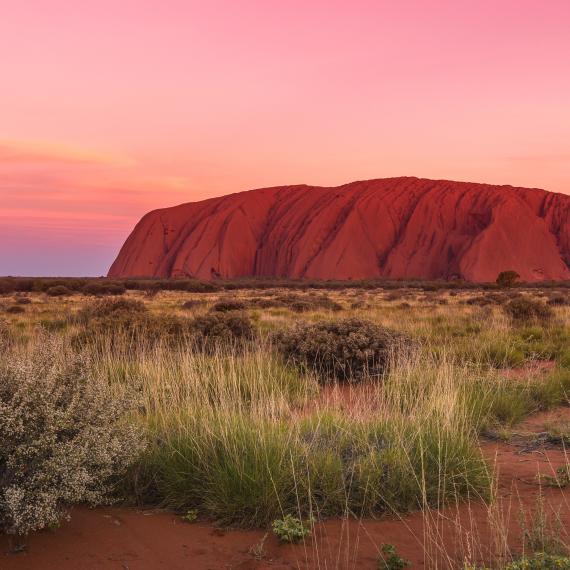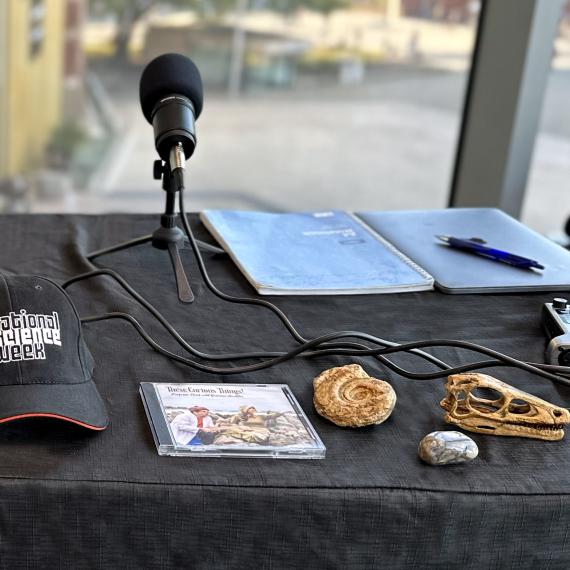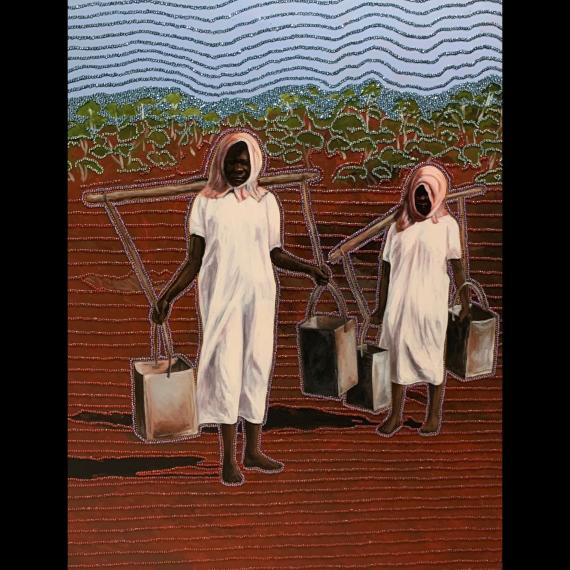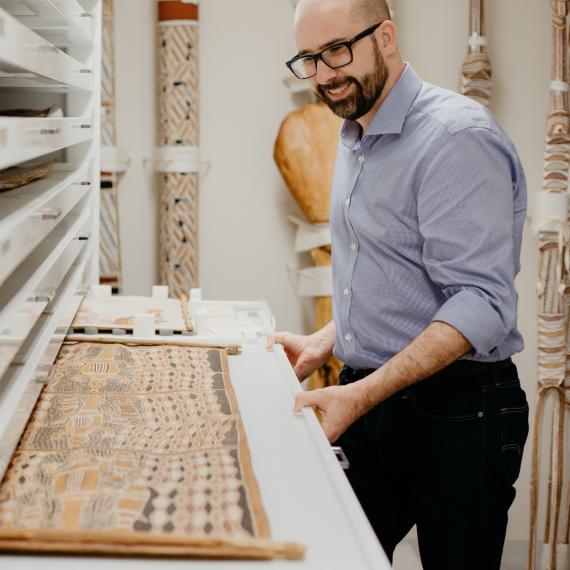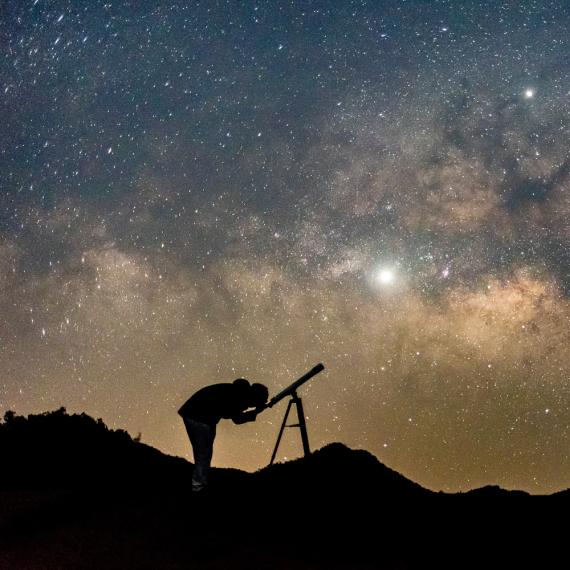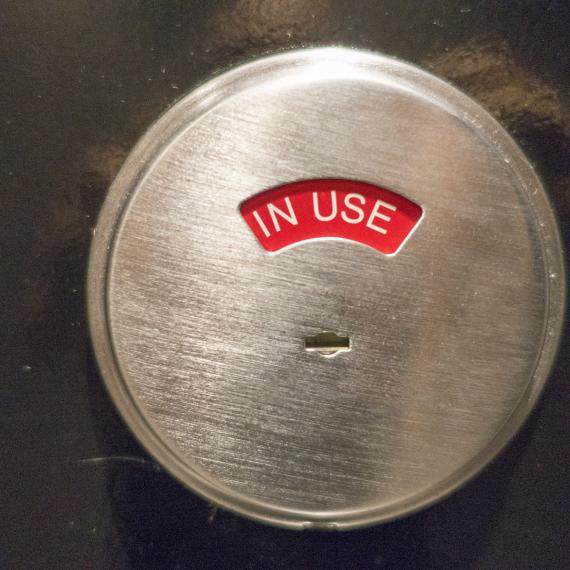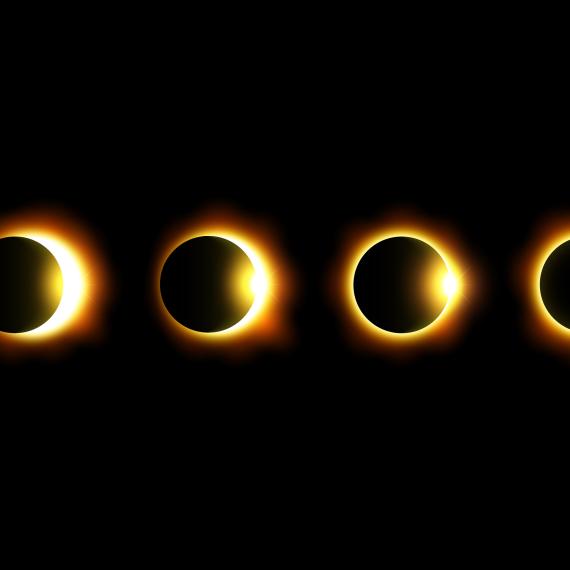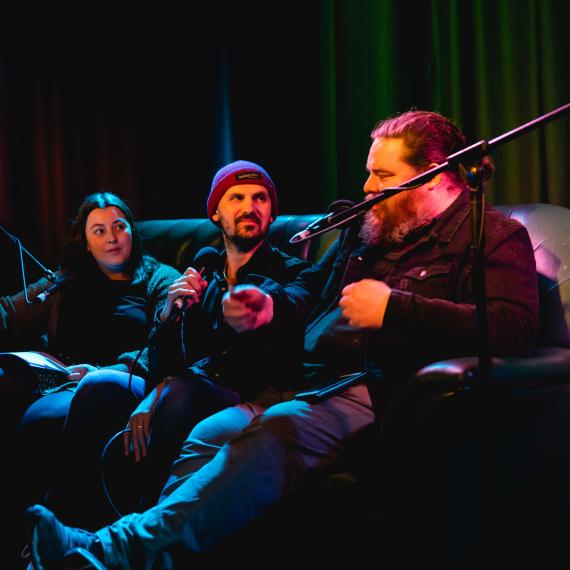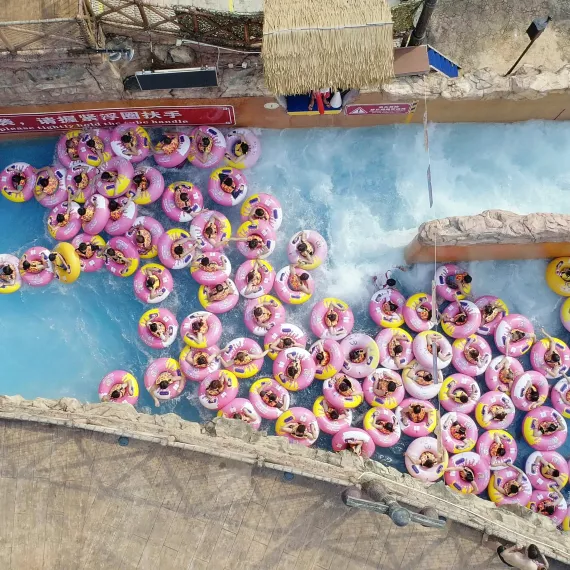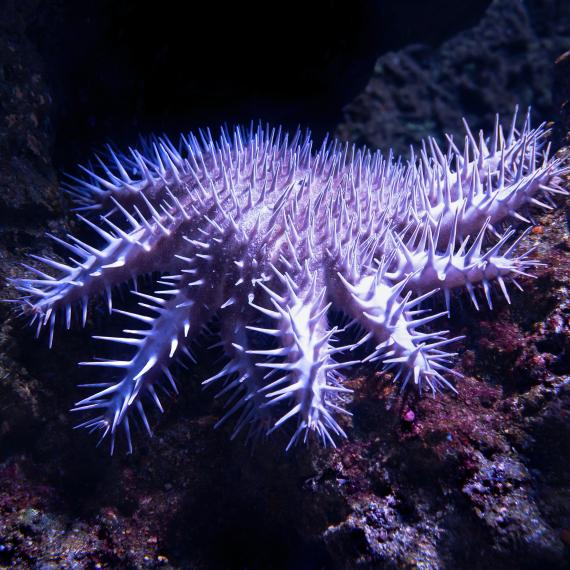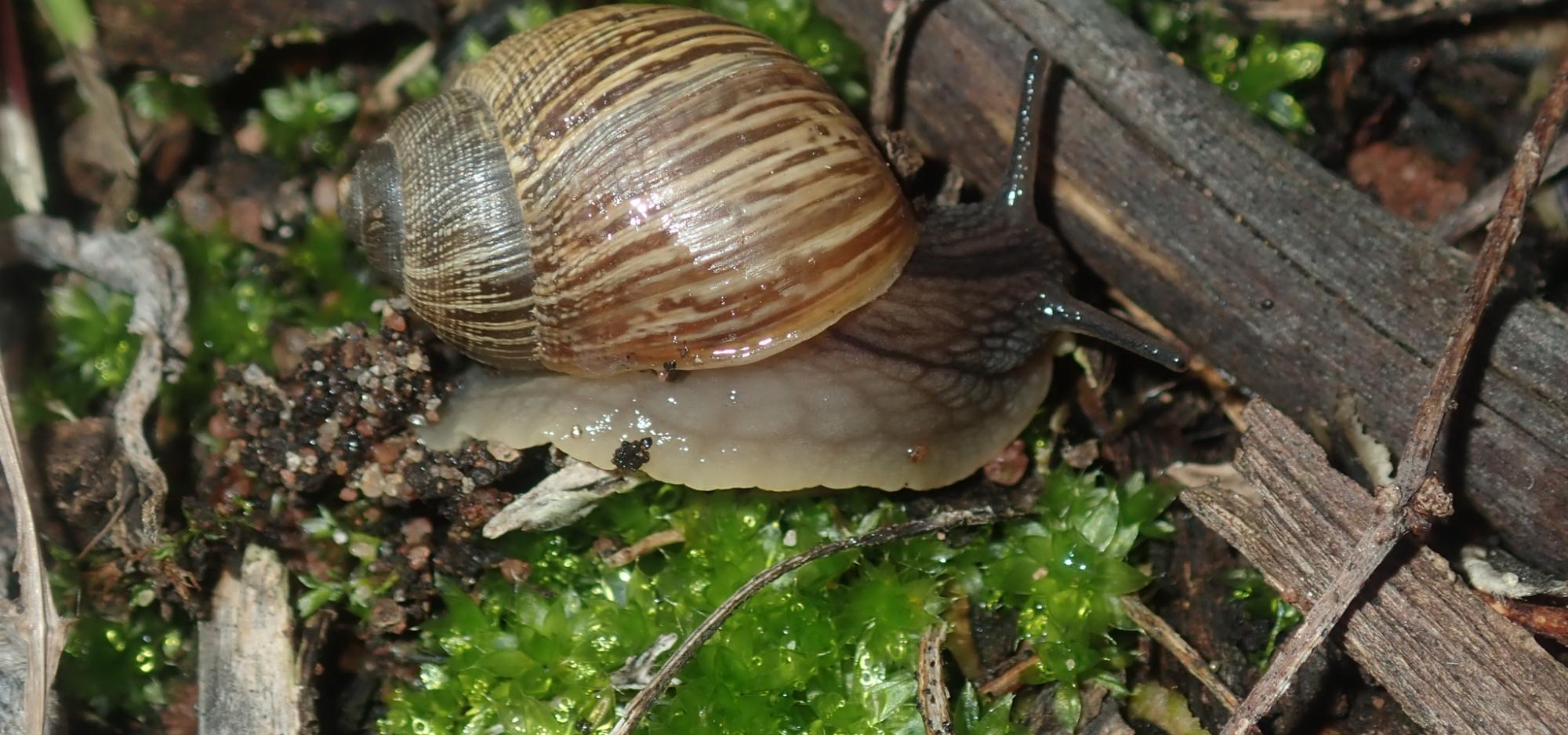
Snail Snap 2023
No, it’s not a card game! It's a community initiative helping us further our knowledge about a group of endemic land snails, Bothriembryon, affectionately called ‘Boths’.
These relatively small, shelled molluscs can be found in most parts of south western Australia with many species listed as threatened. That’s where the community comes in. During the winter months Snail Snap enlists the public’s help to keep an eye out for live crawling snails or even their empty shells and then upload any sightings to the iNaturalist app
WA Museum scientists will then provide identification and feedback on sightings in the hope new or rare species are found
Listen to WA Museum scientist, Corey Whisson, to find out more about “Boths" and how you can get involved in the winter.
Meet the Museum
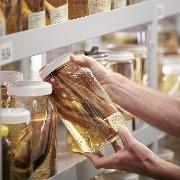
Are you curious to find out more about what goes on behind the scenes at the Museum?
This monthly program delves into the less visible part of the Museum’s work, as our scientists, researchers, historians and curators share their expertise and passions.
-
Episode transcript
Welcome to the Western Australian Museum Boola Bardip Talks Archive. The WA Museum Boola Bardip, hosts a series of thought provoking talks and conversations, tackling big issues, questions and ideas and is delighted to be able to share these with you through the talks archive. The Talks Archive is recorded on Whadjuk Nyoongar boodja. The Western Australian Museum acknowledges and respects the traditional owners of their ancestral lands, waters and skies.
Event MC:
Good evening everyone and welcome to our Meet the Museum for tonight, which is one of our monthly talks series that delves into the less visible part of the museum work as scientists, researchers, historians and create curators share their expertise and passions. Is this your passion?
Corey Whisson:
Yep, definitely
Event MC:
Before we begin I just want to do an acknowledgement of country to the Whadjuk Nyoongar nation of the land that we are sitting on today and pay our respects to elders, past, present and emerging for the Meet the Museum this month we are delighted to be welcoming to the WA museum scientist Corey Whisson to find out more about the Both’s and how you can get involved this winter. So I’d like to introduce you to Corey
Corey Whisson:
Great. Thank you. I'm just going to take a seat so I can talk through this. Yeah. Good evening, everyone. It's a nice small group, so the talk will take probably about 30 minutes or so and so plenty of time for questions. And I've got some specimens there and some field guides. So yeah, it's just really nice intimate kind of talk.
But yeah, so tonight's talk is about a citizen science project that we, we thought about developing for quite a while. But like most things, it takes time. And sort of in the last last year we managed to get up and running. And so this year it's Snail Snap 2023, which is led by myself and Lisa Kirkendale, who’s down here. That's her in the Kimberley doing some fresh water sampling. I think she quite enjoyed it. She's Canadian, so she's seeing parts of Western Australia for the first time. So really enjoyed the Kimberley and has been really supportive of this particular group and project. So I'll just move to the next slide. So I guess the the main thing that if anything, if you take away from this, this talk is that not all land snails in Western Australia or Australia are the bad introduced ones.
We actually have a very special native land snail fauna and one of those groups which is largely in Western Australia is the Bothriembryon. So just to give you an idea of -- and we call them Both’s affectionately, so yeah, you can see the common garden snail that's Cornu aspersum on the left and then we have a beautiful native Bothriembryon on the right.
That one's up from the Moore River National Park. So there are some similarities, but shortly all kind of get to talk to you about some characters where you can tell them apart. The group itself is really old, so it's it's Gondwanan and so its ancestors date back to when you know, Australia was joined with South America, Africa, New Zealand, Antarctica, etc. So it's been around for a long period of time and mostly concentrated in that lower south west.
So where we all live basically so you will definitely encounter them and some really odd kind of populations up in the Pilbara, one in central Australia, the lower part of Northern Territory, and they trickle across to South Australia where they stop and then there's this really odd species down in the south east. And so we're kind of working on the whole group as a whole, particularly investigating the relationships among those sort of disjunct populations or species rather.
So at the moment there's about 50 described species and we long suspected there are a lot more, but the research we've done has kind of blown away about how how diverse they really are, which I'll, I'll get to in a moment.
So what is a Both? So typically the shell is probably a great way of kind of getting your eye in on them. I mean, generally they can be about 1 to 5 centimeters in length, depending on the species and where they occur. So that's certainly very visible. They're not microscopic, which we tend to think of as five or ten mil less. So you will see them obviously with some of this color patterns, they might blend into their environment. But with a good eye you will pick them up.
Again, the shape can be quite oval, as you say, in the middle, or it can be more of an elongated conical shape there on the left, there there are a couple of species. The color, again, can vary that can be a uniform color. They can have really strong spiral bands, a lot of species along, particularly, along the south Coast, have really strong axial longitudinal flames.
Really pretty actually.
Some of them.
You'll see some photos. There's an example of some of the flames there on the right. What you can --the to really tell about Bothriembryon, which is a little bit difficult because you probably need a microscope possibly on a hand lens is to look at the very tip of the shell, which is we call the protoconch. And can you see that kind of honeycomb pitted sculpture? And no other snails tend to have that that pitted -- particularly well, ones you're going to compare in Western Australia. So that's a really good way of putting them under the microscope and having a look or even a hand lens and starting to see that sculpture that actually is the sculpture of the animal growing inside the egg.
And when it hatches there's a little crawling snail, the sculpture changes. You can see a break in the sculpture and that's where it's actually hatched. So it's one to sort of keep an eye out for. You will find a lot of adults might have an eroded sculpture because calcium. Right. Is kind of at a bit of a premium in some places. And you quite often see the juveniles on top of the adult rasping away the top of the calcium layer or even dead shells. And so something to -- I was recently down in the Recherche, Recherche Archipelago well east of Esperence, sorry, Cape Le Grand and Kaipara National Park and I knew a population was there of an undescribed species. We climbed to the top of this large hill because they’d been collected and I couldn't see any I couldn't see a single shell. And I thought, you know, is the data wrong? What's going on? Like, I really want to collect them so we could describe them. And then I saw just one at a quarter, my odd little shell, like half a shell. And I thought, Oh, that's great, they're here. And I picked it up. And then inside the shell was a little crawling juvenile, just finishing off the loss of the shell. So it was that point I realized, you know, with this group, if you don't see a shell, doesn't mean they're not necessarily around because of the recycling of calcium, which was really interesting.
So from that point, I never dismissed that they exist from, from an area. So that's kind of the shell and they are quite variable. But once you kind of understand the introduced fauna and you start to get a feel for it, for Bothriembryon and it's this, I'll give you some other ideas in terms of habitat in a minute.
So looking at the soft body of the animal, it's a typical snail. Obviously they have a large foot which can come in a variety of colors. Some of the swan coastal plain ones are really bright gray. One species, kendricki, some can be a sort of more of a pale, pale brown color, which is Bothriembryon bulla
So they do vary in color a little bit. They had this nape or neck stripe. They're some species, some species don't. This is Bothriembryon jacksoni from the Walpole area. There's sort of several species along the south coast. This is probably the most commonly encountered species. If you get down to the south coast from about Walpole, Walpole across to Albany, this group quite prolific in the coastal heath areas there, pretty much all through the year. And they have two pairs of anterior tentacles, the cephallic and lower ones which are sensitivity to light and also taste and smell.
So the group, the ecology of the group, well, they've been around for a long period of time, so they've adapted to a pretty harsh Australian climate. It's extremely hot during the dry season and then it's cool and moist during the wet season.
So they're, one of the biggest risks to a to a Bothriembryon. It is desiccation, so they don't want to be exposed to hot, dry weather. So they've been able to persist. What they do is they actually bury during the hot, dry summer. They have a very well timed pattern. So they will particularly the Perth ones where there's kind of a regular winter period followed by sort of six months of dry weather and then six months.
So at the end of winter they will they just know exactly when to bury. They will seal up with this white, calcareous, epiphragm, we call them, um or, just trap door for example. And what that does is it keeps it humid and moist inside for the for the snail and they just rest in the soil. The leaf litter buried down can be several inches to five or six inches, sometimes under rocks and species in the Darling range go under rock and then in soil and the soil actually dries like a concrete and they protect it from the the dry weather but also fire and and predators and so forth.
And then come sort of the first major rains. I say major because I've never observed them come out in a light kind of early winter rain. So they this is I guess this is research we need to understand. But there are other factors potentially that allow them to to time. Right. And sort of come out of the soil and that could be temperature, obviously rainfall and other factors involved that they're able to time the kind of breaking estivation and they'll pop up and they'll feed, they'll mate and they'll lay eggs all within that winter period and then straight down.
And the eggs take about from the work. We've monitored the population in the Darling Ranges and they take about 30 days to hatch and they, the the eggs are usually layed -- this is for one species anyway in about a clutch of eight or ten. So we suspect the snails are quite slow growing as well. We've done some tag and recapture work in the Darling range and so can take a fair amount of time to reach maturity so that is a conservation risk.
They are hermaphroditic, so they both receive and provide gametes and that's a really key adaptation. So you can imagine a snail interacting with with its partner could be a low chance of encountering. Well, they can, they can provide and they can receive, so they both become egg layers. So that's really strong. And all land snails are like that, but they also occur across a range of habitats.
The species is usually quite specific in its habitat, but the group itself is right across a variety of habitats. So we have sort of rocky terrain like, well, Walyunga National Park or Serpentine Falls, you know, all across the Darling Range we have, I mean, woodland. So at Kings Park we've got them in sort of Casuarina banksia woodlands, gorgeous and gullies.
So across the Hamersley Range is really interesting species in the Rocky kind of banded on formations there or in Central Australia they're in amongst these gorges, most commonly they're found closer to the coast I guess in coastal scrub and heath areas. So they're just some different habitats you might find them.
So if you're going to head out and look for one and what's some kind of key tips I could give you?
Well, I would tend to target healthy bushland with native vegetation, some I guess disturbance is okay if there's a few introduce ways and so forth. Most places are like that, right? But as long as there's it's in relatively healthy condition, there's a good chance you'll find them. If you do it during or just after rainfall increases your chances.
I'm talking about summer sorry, winter at the moment, by the way. But I've often found best early in the morning or late in the day, probably early in the morning when there's kind of dew on the footpath. And this one is one we encountered at Kings Park just crawling and you will notice footpaths are fantastic. So if you go for your bushwalk or your walks or whatever, it isn't the dirt or gravel path or whatever, it's a great way to spot them in early morning and you're looking down right? It just, I spent a long time at Esperance for a four bush blitz with surveying and it was tough because it was summer. It was quite dry and then not out. So I really want to live on so we could do DNA and we've got a sort of a shower overnight which you get down there. And in the morning we went to a site and there was this one fully stretched out, just sort of crawling along the side.
And it was just it was too easy, really. And it was this time we had to take it, take it. But I mean, they are really good because obviously they're not hidden by all the vegetation and so forth. And then during the day, we've had I've had really good success finding them under fallen branches or logs. You just sort of turn them over.
Always make sure you put them back, obviously. But that's what we found down at Busselton there that was under a fallen branch. You know, the, the branch itself keeps the ground moist, which the snails like, keeps them safe from predators they’re hidden. And then we suspect that kind of more active at night, nocturnal animals. But there's some areas to kind of think about if you like to find someone, some of them.
So I often get asked and I got asked this today, why did I why did I study Bothriembryon? And well, I've worked at the museum for over 20 years and specializing in land snails, but I often found a sound with Bothriembryon. They're quite large, they're fairly iconic, but they're largely found in Western Australia, in the south west, where people often encounter them. So there was a real need to know about the snails, know about -- people would often -- and going back 20 years we knew very little about Bothriembryon. We didn't understand what species were known or described. And so there was a real need to kind of understand Bothriembryon and how, what the distributions were like so we could help with conservation.
So that that sort of flowed into me doing my master's in 2019. And the launch, the main objective of that was to do a large DNA tree on the group. And just to give you a bit of an idea, so you go out in the field, you collect the live one, and then we -- a standard practice is to take a bit of tail tissue, which we would then put through for sequencing and we'd keep the animal and preserve it. So we've got a, you know, DNA sequence and a matching voucher to sort of describe or work up. So there's some of that dry collection. We've got a quite a large dry bothriembryon collection, which I've bought some shells which feel free and have a look afterwards. And yeah, so shells are actually very valuable because they indicate that the species was there.
And there's certainly a lot of records in the museum that we've gone back to and haven't been able to find the species again. So they've probably been lost for for a variety of reasons, which I'll get to in a moment.
Rakes are good. By the way, if you sort of want to do some intensive searching, just raking to take off the top layer and then sort of looking through closely is a really good sort of tool.
So I don't want to kind of overwhelm me too much with this, but this is our DNA tree. And what I wanted to show you for any of the shells is some of the variety of species you'll see. But wherever there's sort of a tip or an end that doesn't have a have an image, that's a new species.
So you can see how many potential new species we have. And when we did this DNA tree, all we want to do is capture the known species in the tree. Like, we weren't trying to prove there were new species or go out and collect new material. We just wanted to capture by feeding in what we kind of had. We've come up with this amazing kind of data that shows we've got so many new species and we've built on this a lot more since. So the other important thing about Bothriembryon is at the moment a lot are listed as, as threatened either internationally with the IUCN Red List, and seven of those are from the South west and a lot of the species, at least two because they have short distributional ranges, which we call short range endemics.
It's called the the, the buzz word when you do an environmental impact assessment. So threats for the species vary across a lot of things. It could be that something was described way back in the 1930s or late 1800s, and it hasn't been recollected since, so it's been listed. Or probably the main threat is land clearing. So it's either, you know, extensive clearing in the wheat belt areas, for example, for farming, or it could be the expansion of urban housing and so forth along the swan coastal plain.
And because these species occur in small pockets, a substantial amount of clearing could reduce or eliminate them. Basically. Obviously fire as well is another factor or threat. But as I mentioned here, the onset of mining in the early 2000’s, particularly the Pilbara, highlighted kind of the importance of Bothriembryon because they were kind of in the, across the Hamersley where all these mines were being initiated.
So that kind of led to this. And there's a picture of the listed ones, Bothriembryon brazieri as from the Stirling Ranges, you'll see that kind of more, away from the rocky areas down in kind of, the marri jarrah forests around the kind of hinterland of the Stirling Ranges, Bothriembryon spenceri is from the Red Center. I've never collected or visited that one, but it's certainly, it's a really special one, It's really narrow range. It's this kind of it's probably what we'd call more relictual, where it's persisted there for a long, long period of time rather than sort of, you know, spread out there. And then more recently in kind of speciated. Irvineanus in the middle there is from Cape Naturaliste also found atBusselton. Glauerti is, which is the photo on the cover page is from the Stirling Ranges, so Bluff Knoll it’s the commonly seen. So if you're up for a hike and you you want to go up to Bluff Knoll and it's a nice damp morning, you'll definitely see them crawling around on the other, on the across the footpaths or the rocky scree areas to the sides of the path. Bradshaweri is from around Tambellup, so the kind of farming areas where it's been pressured.
Whitleyi is, is interesting because that's up around Geraldton and that's presumed extinct. We -- it was described on a shell and we haven't found it since. So we may have lost that one. Perobesus, which I think is probably the prettiest one. It's around more river National Park area, um, is, that's listed I think because of land clearing and just the small distribution. On the right is praecelcus, which I'll talk about a little bit later as it's something for Snail Snap 2023, but that's from Caleb Heron in the Wheatbelt.
So I guess I got asked why, why did we snap start snail snap? Well, as museum scientists, it's pretty obvious to us that the state's too big for -- it's just Lisa and I that work in molluscs. And so we, we not only look at land snails, but we look at marine molluscs as well.
Like last year, we did six weeks at sea, trawling the seabed so down to 5000 meters, collecting marine molluscs, and then one the next week, we could be in a fresh water system collecting freshwater molluscs. So it's hard to kind of get to the places we need to be. We know. So if you have a look at the map there, you can see the general records of both Bothriembryon in the museum. So you can kind of see the rough distribution. But there's a lot of gaps in there. Right. And you would expect for that to be quite continuous all through the south west. So we know there is, there's more populations and species to be found. And so, you know, the idea is or the notion Both in my backyard”, like we, we're, we're definitely seeing now that certain areas or towns or even suburbs or whatever might have a Both in their backyard that's kind of restricted to so that that near area. So that's quite exciting I think, that for people to go out there and find something new. Yeah. And the Both itself I said are like 1 to 5 centimeters. So they're relatively big and visible, but they're only active for a short amount of time during winter. So not only we've got a big state, we've got like a limited amount of time to get get them live.
But, and that's why, you know, getting help from citizens scientists is really important for us. And yeah, it's good fun. You're out there, you're walking around, you know, doing bushwalking… naturalist and learning. And I think it can be -- we certainly had some really active citizen scientists last year in the project, and it kind of gets quite obsessive where you want to kind of find each species, for example. So it really is a good, good activity and also we didn't we don't know much about Bothriembryon, we sort, of in terms of their ecology, like, you know, what are they eating, what's what's feeding on them, what kind of birds or so forth, the life span, the habitat, all this kind of information can be captured in in images or most of it anyway. And we've seen that already from from last year, which I'll I'll touch on. But most importantly from a kind of a software or program perspective, Inaturalist is, was available and it's quite a user friendly free platform to launch something like this.
So, Snail Snap 2023. What is it exactly?
And, so, every year, this is the number two. It will run for three months, June, July and August.
And that's because that's winter. It's wet and that's when our friends are out and about. That's our snails and you guys and we can see them crawling. But even shells are valuable, particularly if you're in a quite a remote place, you know, I mean, take it, which I'll explain, take a photo and upload it. But shells are equally as important and the several ways you can get involved, I mean, the most common way is to install the Inaturalist app on your phone.
I mean, everyone's got a phone, right? Well, most people…. just join the Snail Snap 2023 program. So you become a member, obviously allow locations from your phone. And so when you're out there in the snail now just take a photo and it'll upload through the through the app and it'll basically come on the snail stamp 2023 page or alternatively, you can just take photos with your phone or a camera or whatever and just go on to the website, go to Inaturalist, upload the image or join, sorry become a member and upload the image and it'll be on the Snail Snap 2023 page. The page itself. We are concentrating on Bothriembryon so if you do upload something and you're not sure, either myself or there's a whole community there who will identify it. People, uh, are many people familiar with Inaturalist?. Yeah. So it'll -- people soon tell you what it is and if it's introduced then it'll, it'll come out of the snail snap project and go to the wider Inaturalist data.
So or I put this down the bottom for kind of less tech savvy people, which we are getting. Just feel free to drop an email to myself for later and we can upload that to the page for you. So that's good. So what happens? So the, we, we maintain an active profile on the page. So, you know, every couple of days or sooner we'll give an ID on the, on the species that you've uploaded and comment on it.
We often provide clues to identifying the species as well. So you get a bit of feedback as to why we've called something like we have and just an example down the bottom there. So I forget who uploaded that. It's from snail snout 2023 So it's down the Albany region I've identified as Bothriembryon Kingii and I've just kind of given a a sentence about why.
Well, it's got an off-white background with often mottled axial flames which are, you know, the red axial flames you see there, it’s quite characteristics of the species, but also it's from the type locally. So this one was actually from bald head in Albany and that species was described from bald head. So when we say type locality, that's where it describes them.
So they're kind of really interesting things. And so for us, location is really important because once you start to move away from where something was described -- can start to lead into a another area or another, a different species or potentially a new species, or there could be another one around there as well.
So I'll just give you a bit of a summary of last year result.
We were really, really happy with the way the program went. We had 166 observations uploaded to snails in 2022 across 31 members. We had a very, uh, excited citizen scientist, Kath, whose, um, she was based, I think she's based, ummm, I’m not sure, you know, she might have been Mount Barker area, I'm not sure or Albany, I can't remember now but she, she's moved up to Perth so she might start looking around the Perth area.
But yeah. 79 observations the upload and, and found some wonderful stuff. So we had over 36 members for last year's program and we captured 17 described species. So at that time I think there was probably about 45. We've had about five species named since. So 17 out of 45 is not too bad. You can see the the distributional map, which Snail Snap, or Inaturalist produces.
So that's the kind of the, the, the distribution of records from last year. Probably the most remarkable was that we found at least six undescribed species from last year, some which we had not even encountered. So people were getting to places that we'd never been to in. And there are there are a lot of areas like that. So we're definitely excited to see people get to get to these areas.
Obviously, we get habitat information and GPS of where the animals have been found and we also got some information on the ecology, such as feeding, mate and mating pairs. So I'll just show you some what I've talked about there, just some images, if you like.
So these are some of the things you can expect to see. So on the top left was a new species from the Northcliffe area, and we've kind of given credit to all the people that got out there and had fun in the middle.
It's a beautiful pink species from just east of Albany that got named last year. That was from Kath. Kath was our very active person from last year. Got a a new species from the Mt Barker area by Locksley. She was another really active person, probably my favorite one there down the left from Albany was a new species there with that mentioned those beautiful spiral lines.
And here was a Jurien bay, new species. And I think the thing to remember about snails… well, Bothriembryon is that the further north to go, the less time they're probably going to be out, right, Because winters are shorter up there. So spotting things to the north is probably harder, but could be more rewarding as well, particularly that one.
I don't think I've ever seen that one live before and I was just like, Wow, was just like, what was that?
And he saw some example of some ecological observations. So you've got some feeding pairs on the left, You've got Bothriembryon bula from Kings Park there on the far left. In the middle, you've got Bothriembryon Kendricki with that really grey bluish.
Oh, that you was it? Oh, great. Oh, has anyone else, uh, been uploaded, had their photo uploaded yet?,
Audience member:
I put some new ones up this year
Corey Whisson:
Okay. Yeah, yeah. Awesome. Great. I'm really pleased about that.
Um, and on the right there, just the way the shell's been broken at the tip, it's we know that's quite a characteristic of rodents probably rats feeding on the on the shell so we can kind of go, okay, well there's some predation happening happening there for this fuscus from down the Walpole area.
Okay. So this year we're we're about 14 days in. It's only early. But uh – I just thought to give you a quick summary of how things have been going, you can see some of the records we've had there.
Got a nice one up there at Shark Bay, which was really good. We're up to about 11 citizen sciences members at the moment, nine species that are described as being captured and at least two undescribed species found, I was supposed to get rid of that bracket.
But yeah, there's an example, potential new species from the Albany region. They're on the lower left by Kath again, just before she left she got, got a couple in, before she headed up to Perth. And then again back to the Mt Barker area is probably that same one from last year that I've put in. But Kevin's been really active and it's really good because people are quite keen to see what's in their local reserves as well and that has conservation implications as well, which is, which is a good outcome as well.
So Kevin's been quite active around on, on his property with Locksley, but in that porongurup area to try and document the fauna. So there's some, some ideas that we've got. So this year going going forward, obviously we like to maybe put some feelers out for people if they're heading out to the wheat belt and go fields too to keep an eye out for snails.
Well anyway, remote really, this is just kind of some ideas maybe looking for rare taxa. This is presumed extinct one from Kellerberrin that we do think it is still there. But we we've done one or two surveys and haven't managed to turn it up, but it's quite a big area so it'd be great. There are a number of species like that that are quite rare, but we just probably need some some effort.
So we'll put up a little um, either through the Facebook page of the museum, but also on the Snail Snap page. Just some updates and some some guides about these species, about what we're trying to solve. We'd like to -- should happen this year, maybe head down to an area where we where some new species have been encountered and head down there and team up with some citizen scientists that are, that have helped discover them as well.
Probably take this Snail Snap talk to the community talks around around WA, particularly when we go somewhere for fieldwork to follow up. And I think the most important part for us is not only do we get data on rare populations or their distribution, but it's ,it's a great way of us having complete data for new species so we know where they are, their habitats, some lovely photos so we can kind of head straight to a location and do our fieldwork and just really cuts down our, our time and effort so then we can describe them and then inevitably list them if they're kind of short range and start to put in some conservation protection for them.
So they are Bothriembryon on display in the Boola Bardip exhibitions. And then probably most importantly, which is there are two kind of levels of this this Australian landsnail book that came out in 2019 I think. That's got a really good section on all land snails now introduced and Bothriembryon as well. But there's also a kind of a field guide version as well, which is also available.
So if you really want to get into Bothriembryons and other ones, I'd definitely suggest getting a copy of volume two the full volume. Otherwise, the field guide, which is kind of a reduced version, is also available. And don't just go through. And I think that's kind of the end of the talk from my point of view.
Is that you also get is that the one from this year?
Audience member:
<inaudible>
Corey Whisson:
Yeah, it's lovely and they're really….
Audience member:
He following another one.
Corey Whisson:
Yeah, the foot's really. So what's really interesting about that group is with the sort of the DNA we've done on what we have, it's not clear that there might be more than one sort of species, so we're kind of working on that one. Yeah, it's really interesting.
Audience member:
They have very <inaudible> colour….
Corey Whisson:
Yeah
Audience member:
Looks like lava when its drying….
Corey Whisson:
Yeah
Audience member:
It reminds me of the cracks…
Corey Whisson:
Yeah, yeah, yeah. And you can kind of see the top of it. It's quite eroded. So I'd say the juveniles of you'll notice that now in every show you see you go good. But yeah. And that's the link for the website if you want to do it that way to join. Yeah. Thanks to everyone at the museum. Some credits there have people who are working on lLisa as well at the museum.
Yeah. Thanks very much. That's my email and that's kind of the end of my talk but happy to. Yeah. Field a heap of questions yeah?
Event MC:
Yeah. Anyone have any questions? Sorry.
Audience member:
Yes. If I may. It would be very good. So the Bothriembryon, they are not all the snails. They are just a particular group of snails? So for instance my the garden snails I've got in my mailbox, It’ll actually eat a letter in 24 hours will be gone if I don't get it quick enough, they’ll havewell eaten it!
Corey Whisson:
Wow
Audience member:
They are not them. They are something different?
Corey Whisson:
Yes, I probably should have said this. This is in their family called Bothriembryonitdae. That's that's their family. Yeah. Your introduced snails are generally and a couple of families Helicidae would be the the brown garden snail um, and and look all introduced snails when I say they've, they've generally had a mediterranean origin so they've come across probably through from shipping or you know, way back to, to when we can kind of but we're also seeing a lot of ones coming across from eastern Australia. Now we actually had the, you know, the green snail now you would have seen.
No?
So there's there's a brown snail, there's a kind of a version that looks the same, but it's called the green snail and that's kind of spread quite well around Perth. And so for a period there, a lot of people couldn't export over east that were sort of in nurseries and so forth because it was absent from over east. So. I think that's kind of finished now. I think it's made its way there, but there's kind of this exchange and we’re at Welshpool the museum, where there's a lot of transport. And so there's unfortunately there's quite a variety of introduced snails and I think they come across with the transport and so forth. But yeah, now they're in different families. Yeah. These ones, the Bothriembryon today. The other group, other native group that you'll get much further north and they're kind of exclusive so they do overlap a little bit through…. Um ,I'll just go back to, to a map to talk about….. they kind of overlap a little bit….. or maybe if I get where I've got the distribution. Yeah, they kind of overlap. They're all over here is Camaenids in the northern half and they kind of overlap a little bit like that, but they're kind of exclusive, but they're native as well and they're in the Camaenidae, so but they're kind of more of a rounded shell. Bothriembryon are a very sort of slender and and long but you'll, if you ever get to the Nullarbor there's a species called Bothriembryon dux, that's the largest one and I've got some there and they're about that big.
Yeah, they're quite remote and their shells persist for a long period of time. So like yeah, you quite often see them. Yeah. Yeah. But they're quite -- the arid ones would be a little bit more reactive to moisture because of the uncertainty to it. So they're probably able to pop up and do things a lot faster and pop down because of the infrequent rain that they might get.
Whereas I think the south west ones have a more defined pattern.
Audience member:
<off mic asks a question>
Corey Whisson:
Yeah, yeah. Okay. So yeah, so I'm just going to repeat your question so for the, for the audience. So you're asking about how far the snails travel. Yeah um, not very, not very far. That, that I would expect. I don't have scientific data to say that, but I would because of the slow moving nature. And that's the thing about snails. Right. They can't be, they don't have easy dispersal. They can't jump up and fly, you know, So it takes time to get where they are. And then if they get disconnected from that habitat, for some reason, that could be a change in vegetation. For, for example, I'm talking over many thousands of years. There's no way of them getting back.
So the only thing I can go back to some work we did in the Darling Range, and it would seem that most snails -- because we did some tag and recapture sort of, within 50 meters of a kind of common rock, They would stay within that kind of area. You could kind of expect.
Yeah, yeah. Quite small. Yeah. Yeah.
You know, because they estivate I think they're very habitat specific in terms of what they need to feed on because they feed on native vegetation. So they need to be close to that vegetation for food, but they also need to be close to that vegetation for, for, for estivating and hiding. So a weed for example, wouldn't offer that protection and because it's, it's, it's root systems not as established as -- we quite often get them in root systems like where they're estivating because they'll bury down hiding amongst native vegetation in the root system. So that kind of habitat now they seem to be tied to in terms of actual lateral movement from a particular place.
Audience member:
<inaudible>
Corey Whisson:
Yeah, yeah, yeah. And I think….
Audience member:
I was sort of thinking if you had a back garden and so there could be a patch in your garden….
Corey Whisson:
for native snails?
Audience Member:
Yeah, if they're not being….
Corey Whisson:
Yeah. If you ahhh, if, uhhh, my answer to that would be if you backed on to a pretty healthy nat… or just a native woodland or reserve certainly in wet I would, I could expect them to come out and just by chance kind of be near your, like it's not unheard of to have them, you know, coming close to someone's.
But I think that their kind of place of estivating would be back in that bushland because, yeah, you know, they'd have other, they'd have predators and probably other snails introduced now to compete with as well, if you like, slugs and so forth. So that's the other threat introduced snails as well to, to this group. So they have, there might be competition from other -- so like if you go down along Cape Naturaliste all along there and you go to the close to the coast, you'll see thousands of Theba pisana, you know the round introduced snail the round one.
Audience member:
<inaudible comment>
Corey Whisson:
Yeah. The Italian snail or you'll get the white conical one. There's a couple of species that which littered through the coastal heath and you might be able to see one or two Bothriembryon in there.
But I, I don't know, but I dare say going back prior to the introduction that would have been littered with again, that's anecdotal, but you can imagine there would have been a lot more Bothriembryon, but now they're having to compete with, with space and so forth. So I think it probably needs a study, but where there's introduced snails in habitats, you could see that the numbers of Bothriembryon will be reduced and things like slugs would be would be detrimental because they could eat, they would probably feed on snail eggs, so they would be more kind of carnivorous and probably quite, um, quite a risk to snails.
So there's all these kind of threats that they have. Yeah, it is a tough life. Yeah. Yes. Question At the back?
Audience Member:
<asks question off mic>
Corey Whisson:
Well there's small kind of rats native and introduced, I mean introduced can be quite, quite destructive. You know, you'll often see a pile of shells where there's an introduced rat or you have maybe small reptiles. There's been reports of birds, so magpies, umm currawong, I think is that the other one?
We've got limited information. A lot of kind of literature based, but I've had talked to some people that said they've seen crows drop the big dux and smash it onto the ground and eat them. Interestingly, I was down at Esperance with the traditional owners and I've, I've never heard of the traditional owners eating them in their -- because they've got a very long history of middens and so forth.
And that was one possibility. But yeah, I'm surprised. It's maybe it's just not been, you know, published anywhere or discussed because dux is a big snail and you know, it would be quite a good meal if you, you know, if they pop out and, you know, you're moving along way across the Nullarbor or something that, you know, that would be quite a I've never eaten them actually, but I don't see why you couldn't.
Yeah. Particularly dux. It's quite a big, fleshy, thick animal but yeah. And other predators -- we're still, we're still learning. Yeah. Small, small reptiles. Yeah.
Audience member:
Shinglebacks love eating them
Corey Whisson:
Oh yeah, yeah, yeah, yeah. Okay. Yeah. I didn't know that.
Audience member:
They eat them quite ferociously. They shake their head side to side.
Corey Whisson:
Okay. Yeah. So I mean they're, they are important, as you know, as a herbivore so they feed on dead and decaying litter but the really rasping the, the fungi and bacteria of this litter so they're kind of converting that energy from, from that source and becoming available to higher organisms.
So yeah, once they kind of removed from that food chain you see you know there will be an impact higher up the food, food web in that, in that ecosystem. Yeah. Yep. Yes?
Audience member:
Have they made their way across to Rottnest Island?
Corey Whisson:
Yes. Yeah. Now that's a good question. Are they on -- I don't know if they, they, they should. I've never actually done any work on, on Rottnest so let's – I’ll just have to check if we've got records from there.
Do you know if they’ve been on there?
Audience member:
No no, just a curiosity.
Corey Whisson:
No?, There are other land snails on there. That's a really good question. I'll check that. Yeah. I mean, I can't see. Maybe they -- I wonder if they because I just for all the samples that I've dealt with and so forth, I just can't remember a Bothriembryon from Rottnest. And so it makes me think that maybe they've, they've, they were there and they've, they've been removed whether naturally or I don't know I'll check that one. Yeah.
Audience member:
I was just curious
Corey Whisson:
Yeah I know it's a great question because I Yeah.
Audience member:
That’s a new project for you
Corey Whisson:
Yeah. Well the database so we've done a lot of collecting you know from the museum -- kind of started it don't quite a but I think around the early 1900s and so yeah. If materials come in which you'd probably expect we should have it in the database, I'll check that.
I'm quite interested to know. Yeah. Yeah.
Audience member:
You mentioned that you're doing DNA testing on snails. Yes. How often do you do that? Do you do it, say, for a really unique example? Or do you do a random sample of some similar looking snails to see if there's any kind of change in the phenotype or genotype?
Corey Whisson:
Really, all really good questions. Initially we were just trying to -- that tree I showed you do call like a framework, so we just wanted to know, okay, well, these are the species that have been described that we know of, whether they sit on a big tree. And so that was the first kind of stage, and we're nearly there publishing that. So that's pretty much done. Now what we do is we kind of hypothesize something new to science and we'll get it sequenced and then we'll put it into the tree and the tree’ll largely tell us if it's different or not.
Again, again, you know, it might-- by doing like lots of samples. For example, like say that kendricki one, the one that you put out with that grey foot. If we did a lot of testing across its range, we might, we call them cryptic where it might pop up new species, which we thought were all the same. And then you kind of you, you examine those specimens and you go, okay, yeah, that one's different because the sculpture's a little bit different.
So yeah, generally that's kind of the pattern we have. And so it's always good to have for species, have it genetically well sampled across its range and across phenotypes. Example Yeah, for example, like down at Esperance there's a, there's a pale white one and there's a very sort of striped one side by side for the same collection event and we sequenced them and they're identical. So they do have -- some species have a relationship to habitat. It could be like sand versus rock potentially. So they’re things that we need to understand as well. Yeah.
Audience member:
Is there anything you recommend we do specifically when taking photos of them help you with identification?
Corey Whisson:
Yeah, that's, that's a great question. Yes. Yeah, definitely.
Probably it's always good to, to get probably a photo and it's hard when they're crawling so if they're a shell probably in this format which I call the apertural view where you, you know, you can see the, the opening and it's nice and straight. That gives us a good idea. The shape is for my species. It's quite a good character. Obviously the patterns and so forth are helpful, but as a if something's died and there's over a period of time, it will fade. So I guess I would say to you, yeah, that's just to just diverge a little bit. If your shells have got a lot of color still or some color, we would call that recently dead. So it's probable that a live population is not far away.
If, if the shells have lost a lot of color, doesn't mean there's not a live population there. It just means that that shell has been there for quite a lot of time. So when we go out and looking for snails, if we do see shells, we'd kind of look for fresh dead, freshly dead ones. A little bit of color.
Yeah, not bleached white, a bit of color, and then try and find multiple shells and because that's a good chance of where they're estivating and living in that small layer. And then usually that might be around a shrub or something or a tree. And then if it's summer, we would dig under the tree. But obviously in winter, which if you're probably going to be there winter, you'd probably come back in winter and you're more than likely see them crawling.
But yeah, so in terms of the shell, that's probably the photo I would, I would look for and yeah, probably the standard kind of image there where you've got the shell is probably the best character. So if you're going to take a photo of a live one, just try and get the shell as much as you can in the view, kind of whether it's from the side and also from the top would be good, but usually that yeah, usually that that's what I'd suggest. Something like that. Yeah.
Audience member:
And you want to have them in the habitat aswell?
Corey Whisson:
would be. Yeah. Habitat. Yeah. Habitat is good because then we've got an idea of where they're occurring that's really, really useful. Yeah. So try and get it. Yeah. If you get a couple of shots or whatever, just try to get one of, of the nearby sort of vegetation and trees and so forth
Audience member:
So when you upload, you upload a shell, body, and habitat.
Corey Whisson:
Yeah. Yeah, yeah. And you can put that, that becomes one observation, so you upload that and then they're just sort of attached. Yes.
Audience member:
So you can do multiple images?
Corey Whisson:
You can do multiple images. Yeah. Yeah. And that's kind of advisable we've got. I think Kevin does them as separate sites kind of like we. <laughs>
Audience member:
Oh, yeah, stick them together.
Corey Whisson:
Yeah. Or but also Yeah. Kind of. It's good because it means lots of observations but it's good if it's Yeah. Under the one. Yes. Yeah. Yeah. I just add that sometimes on sand, if it's sand dwelling because it's dry, very porous, they can be a little bit harder to find And you generally get this. Yeah, obviously coastal, but you often find that some of them pop up when it rains, but then they might just pop down in between showers and so forth.
So this is something to be mindful of. Sand can be quite difficult to, to, to find them. You've kind of got to maybe have your raincoat and be out there, but but then you're going to find something special. And that's definitely, we're definitely finding every year we've got another worker at a research associate museum, Hugh Morrison, that's interested in the group, and he's always uncovering these species. It's, it's quite remarkable. Yes?
Audience member:
So if I wanted to go out and find a new species of snail, and I lived in say, a suburban area.
Corey Whisson:
Yep.
Audience member:
Where would be the best spot to go?
Corey Whisson:
Um
Audience member:
So if I got an afternoon off and a camera ready.
Corey Whisson:
Yeah, I would go to your, I would go to a reserve or a somewhere where there's a good amount of native vegetation. So if it's been cleared and it's weeds and strongly disturb, it's probably unlikely if it backs onto a big area --but yeah that's, that's the beauty of, of, of reserves and those areas that have they provide a habitat for, for the snails and other fauna. But sometimes they, you know if you look in the wheat belt when we go out, say for example, we're looking for that praecelsus. The only kind of spots where we've got half a chance are to go with is reserves because everything else has been cleared. So it's been cleared obviously with farmland, you're not going to to find them.
Audience member:
What about areas like riverbanks or areas by rivers that have had some development?
Corey Whisson:
Yeah, Yeah. You kind of any proximity to moisture is good, but you don't want them to be too inundated. So they they don't like it too wet. So kind of the fringes of would be okay. Yeah. And half the time with sort of learning as well. So you can be quite surprised at where you might find them. Yep. But definitely where there’s, there's kind of remnant vegetation is, is the best. Yep. Yep.
Audience member:
<inaudible question>
Yes there there was and that that's getting -- so Barrow is getting into that Camaenid fauna that northern one and that's why the Pilbara ones really from Bothriemrbyon’s point of view is quite unique because that's how much further is north population. And so yeah, there are other Camaenid’s on Barrow and so forth. A lot of work was done there and a lot of survey work was done on the Pilbara Camaenids as well because they're through there and only recently we went up to the Hamersley and we're going to name that one from the Bothriembryon from the Pilbara. It's been, we've known about it for a long time, but sometimes taxonomy, this takes a long time. But yeah, we're going to, that'll be great because we can start to understand that species a lot more and help with conservation up there.
Audience member:
You said that the Both’s are – are they the only native land snail species, oh um, genus and family in Western Australia or are there others that you’re likely to encounter?
Corey Whisson:
There are others. Yeah, yeah, yeah. Great question. Again, I would say in terms of land snails, Bothriembryon are the largest you will see. So as a general rule you drop straight down the other ones microscopic. So little tiny Charopids and Punctid’s and things that are really small that unless you really, really look closely, you're probably not going to see them.
The only other exception is a thing called Succinea, which is, it can look a little bit like without kind of confused, a little bit like Both.., Bothriembryon and but it's probably about ten mil or less and you'll find them usually quite close to inundated areas like swampy areas and stuff, which you might still also find Bothriembryon. But that's the only other thing that you might confuse it with or. But yeah, so you've got Bothriembryon in the Southwest, you've got Succinea and then you sort of drop down to small micro land snails. Yeah. So yeah, probably if you're in a healthy, I guess the take home message. You mean a healthy forest of bushland or bushland or in the hills or whatever and you encounter a semi large animal, a snail rather it's probably going to be a Bothriembryon.
Ofcourse there is the chance it might be an introduced snail, but yeah, it's a good chance if it's around native vegetation and generally not in a very disturbed area, then yeah, it will be a Bothriembryon. Yep. And, and just for an examples, I mean around here we've had them from Kings Park, Baldivis, Serpentine falls, Lesmurdie falls, Walyunga National Park had them from Rockingham, we’ve um, Shenton Park, they quite dotted through the Swan Coastal plain, they're all through the hills umm. Down, we've had them that at Waroona. So you know they're all through the south west. There's - and across the Nullarbor. Yeah. As per that map which I showed you -- so wherever it is it's probably. Yeah. – yeah, which you can see there, but obviously most abundant and most diverse in the Southwest. But as you can see, all the gaps in the wheat belt there, can you see the lower gaps? I mean, you know, we know there's going to be records in between there. And so even these areas up to kind of up this part through here, you can sort of see the contour is going to be which is called the kind of the mesic southwest.
And so all those kind of gaps are really interesting. Yeah, I mean, it’s a shame I can’t zoom it in so you can try and see more-- more closely where there's gaps. But for example, kind of east of Augusta, you can see there's a big gap down the bottom left there.
And so that's kind of -- but again, it's it's so it's more that, you know, if you're going somewhere, I mean you can be ultra keen and pack the four wheel drive -- We do have people like that-- And go there to kind of find snails. But you know, if you if you're going there for a holiday or into four wheel driving or whatever, that's where it's you know it's great to have have the happen if you just happen to encounter them or you go for a bushwalk and you see them, yeah, please do take a photo and upload them and we can set about going there and recollecting them at some point.
Yeah, we're just overwhelmed with how much data we've had so far. So been really good.
Audience member:
You said theres even new species that you….
Corey Whisson:
Yeah. Yeah. It's been amazing.
Audience member:
You said there was a common, more common species of, the Boths, then -- that you find that you're more likely to find on an everyday basis rather than -- or are they individual populations that are distinct.
Corey Whisson:
Yeah. So there's probably a mix of what we'd call a widespread species and then I guess you could call it kind of your shorter, or your specialized species.
And I suppose from our point of view, it's kind of encountering those specialized species that might just be hanging on in a, an environment that's that shrinking that they've adapted to and it's shrinking and it could just be a freshwater seep somewhere or it could be, you know, a granite outcrop surrounded by vast, you know, farming land or something, you know.
So they're kind of, I guess the, the specialized Boths and but other Boths, some a wide ranging some are just short ranged. It's just it's a bit of a mixture. But in terms of the swan coastal plain, you will get the Kendricki, which is the one that you've found is the Bothriembryon Bula, which is the golden one. But again, like Kendricki, there could be more species within that. And then you go to the hills you've got Indutus. What's really interesting at Kings Park if you ever get there is it's this theres this scarp snail now so we have a brown Indutus in the in the hills but on the Darling range there's the limestone scree. I don't think you can actually access that. So but there's a bright yellow Indutus form there that's just in the limestone. So I'm not sure what access there is there. Now. I got access a few years ago with umm, the Kings Park board to look, but yeah, you may see them in rain through the Kings Park, but definitely you'll see a few species like Kendricki and Bula
Yeah. And the same for most reserves and woodlands. You'll see if it's. Yeah. It's a good, it's a really good -- if you do see Bothriembryon, it's a really good indicator that it's a healthy, healthy environment, healthy woodland.
Audience member:
I'll just ask one simple question. Yeah. What's going on inside that shell? do they take up the whole shell, or just the fat bit of the shell? Is that tip, is the tip empty?
Corey Whisson:
No they're, No, they’re right back to the top. Yeah. Yeah. And so, yeah, they start as a little tiny five by five shell and then they'll just slowly add a shell. And then usually when they're adult, the outer lip of the door becomes a little bit thicker and, and then they start to thicken back. So you will find shells that are extremely fragile, like there's low calcium. You can just grab them, they'll just disappear and they'll just yet break in your hand. So but yeah, no, they’re completely full, So yeah, they're very interesting. Yeah.
Audience member:
I know you said the Northern Territory, is that related to any <inaudible words> in WA.
Corey Whisson:
Oh, good question. I'm going to say no. Yeah. It might have a different origin. Yeah. Yeah. So that's kind of part of our – probably a study down the line. It's just to work out. Okay. We've got our West Australian ones, exactly how do they relate, and also how does that Central Australia, what does that relate to? When I say relictual, it's probably been there for a long, a long period of time. Like it hasn't --a snail hasn't made its way from the south west into there. It's hung on potentially, you know, way back and it's kind of in that important gorges in the I think that's called Finke gorge is the area. Yeah.
And that one's listed as well because it's only, I think it's like a eight by eight kilometer range. Yeah. And so I mentioned short range endemic. So in the environmental impact assessment, that's 100 kilometers by 100 kilometers is anything that's under that distribution is a short range endemic, which means it kind of has to go through some assessment and planning with the, the, the consultants and mining companies. Yeah.
Event MC:
Um, Join me in congratulating Corey on a wonderful talk.
<applause>
Corey Whisson:
Thankyou
Event MC:
That was fabulous, I’ve learnt so much.
Outro:
Thanks for listening to the talks archive brought to you by the Western Australian Museum Boola Bardip. It to listen to other episodes go to https://visit.museum.wa.gov.au/episodes/conversation where you can hear a range of talks and conversations.
The talks archive is recorded on Whadjuk Nyoongar Boodja. The Western Australian Museum acknowledges and respects the traditional owners of their ancestral lands, waters and skies.
More Episodes
A compelling discussion shedding light on the distinctive narratives of those openly embracing their HIV-positive status and what this has meant historically and in today's world.
Meet Professor Kliti Grice, the West Australian Scientist of the Year 2022, as she embarks on a quest to decipher the Earth's past mysteries.
Join a panel of featured young LGBTQIA+ writers and storytellers as they delve into the fantastical realms and real-world struggles of the exciting new anthology, An Unexpected Party.
Explore Australia's dinosaur legacy with Dr Stephen Poropat as we better understand the science behind the scenes of Australian palaeontology!
As we inevitably move towards cleaner, more sustainable forms of energy, how will a shift away from traditional mining practices transform this economy? A panel of experts explore the implications of this shift with a specific focus on how we see ourselves in a world that increasingly demands environmental responsibility.
Join Megan Krakouer, a prominent Aboriginal leader, as she discusses the nuances of her surprising change of heart on the Voice to Parliament — just a week before the referendum.
Join host Michael Mills in a captivating live recording of the Palaeo Jam podcast during National Science Week!
As AI rapidly evolves, join our panel of experts in an exploration of these complex issues, including how we can harness its power while ensuring responsible and ethical use before we're outrun by its speed.
Do you know how and why your teeth do what they do? Find out all there is to know about teeth sharpening.
Decoding the language of our written and oral histories in Australia.
Join us for an insightful talk with the esteemed Professor Henry Skerritt, as he takes us on a journey exploring the captivating art of Jdewat/Ballandong artist Meeyakba Shane Pickett.
Delve into the way Aboriginal industry professionals are shifting representations, decolonising the media space and creating visibility for Aboriginal people in the industry.
Exploring the debate surrounding the establishment of an independent, representative advisory body for First Nations people.
Aristeidis Voulgaris sharesstories from his eclipse chasing travels and discover the complex instruments and tools used in solar astronomy.
Join a panel of experts and community as they investigate the nature of queer bodies, and queer sexuality, in public space.
Join historian Toner Stevenson and astronomer Melissa Hulbert, as they share their tips on how to salute the sun during this eclipse!
Simon Miraudo and Tristan Fidler from RTRFM’s ‘Movie Squad’ are joined by Chelsey O'Brien, Curator at ACMI, as they review and discuss Alice’s Adventures in Wonderland as a foundation for contemporary storytelling in film.
In this one-off Perth Design Week talk, the Museum celebrates the remarkable women in architecture and film in a panel discussion, recorded as a part of its recent award-winning film screening.
Join world expert Dr Chris Mah from the Smithsonian Institution as he recounts his encounters with some of the most unusual creatures on the planet.
